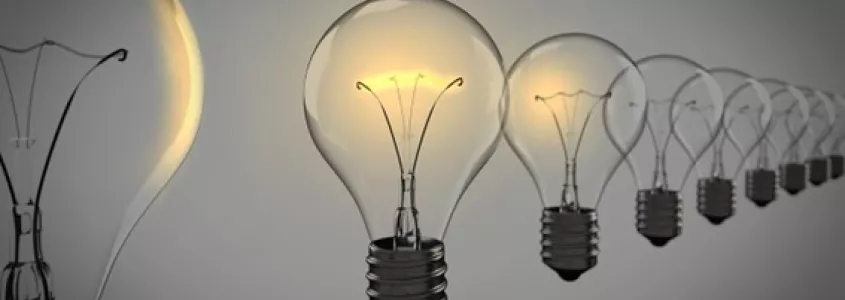
Table of contents
An invention patent is an exclusive right granted by a government to an inventor for a certain period of time to exploit a particular invention. In other words, it is a monopoly granted to an inventor to prevent others from copying and marketing his invention without his permission.
It is important to note that the patent application process can be complex and costly, so it is advisable to seek advice from a commercial lawyer.
For an invention to be patentable, it must meet certain patentability criteria, which vary from country to country, but in general require that the invention be new, non-obvious and capable of industrial application. This means that the invention must not have been disclosed to the public prior to the filing of the patent application, must not be obvious to a person skilled in the relevant field, and must be something that can be mass produced and sold.
The process of obtaining a patent for an invention begins with the filing of a patent application with the patent office of the country where the patent is sought. The application must include a detailed description of the invention, as well as any drawings or diagrams necessary to illustrate it. It must also include the claims, which define the limits of the invention for which protection is sought. The patent office examines the application and determines whether the invention meets the criteria for patentability.
If the application is approved, the patent is granted and the inventor becomes the holder of the exclusive rights to exploit the invention for a specified period of time, usually 20 years from the filing date of the patent application. During this period, the patent holder may prohibit others from producing, using, selling or importing the invention without his permission.
The patent is a key instrument for encouraging innovation and research in industry. By protecting inventors' inventions, they are given a fair chance to recoup the costs of research and development and to profit from their efforts. This, in turn, stimulates others to pursue new inventions and technological advances, which in turn benefits society at large.
However, patents can also have some disadvantages. For one, they can discourage competition and innovation by preventing others from building on patented technology. They can also lead to costly and time-consuming litigation in the courts, especially when patents overlap or are disputed.
For these reasons, it is important to balance the need to protect the intellectual property of inventors with the need to encourage competition and innovation. This can be achieved through well-designed patent policies and appropriate regulation of intellectual property.
Types of patents for inventions
There are different types of patents for inventions, depending on the nature of the invention and the country where the patent application is filed. Some of the most common types of invention patents are described below:
- Utility patent: This type of patent is granted for inventions that have a practical use and that improve or facilitate some process or device. It is commonly used in countries such as Mexico and some Latin American countries.
- Design patent: This type of patent is granted for inventions that relate to aesthetic or ornamental designs, such as the shape or appearance of a product. This type of patent does not cover the functionality of the invention, only its design.
- Plant patent: This type of patent applies to new varieties of plants that have been created or discovered and that have certain distinctive characteristics. This type of patent is commonly used in agriculture.
- Software patent: This type of patent applies to software or computer program inventions. However, the patentability of software is a controversial issue in some countries, as it is considered that patent protection of software may inhibit innovation and development.
- Pharmaceutical patent: This type of patent applies to inventions related to the pharmaceutical industry, such as new drug formulations or methods of producing them. This type of patent may also include patents for medical treatments and surgical procedures.
In general, the types of patents vary according to the country and the applicable intellectual property laws. In any case, the invention patent is a key instrument for protecting innovation and promoting research and technological development.
What are the requirements to be able to apply for a patent?
In order to apply for a patent, it is necessary to meet certain requirements, which may vary depending on the country where the patent application is filed. Some of the most common requirements are described below:
- Novelty: The invention must be new and not have been publicly disclosed prior to the filing of the patent application. That is, the invention must not have been disclosed in publications, exhibitions, conferences, etc.
- Inventive step: The invention must involve an inventive step, which means that it must not be obvious to a person with average knowledge in the relevant technical field.
- Industrial application: The invention must be susceptible of industrial application, which means that it must be capable of being manufactured or used in some industrial process.
- Clarity and conciseness: The patent application must be clear and concise, and must describe the invention in sufficient detail for a person with average knowledge in the relevant technical field to understand and reproduce it.
- Right to apply: The applicant must have the right to apply for the patent, which means that he or she must be the inventor or have the intellectual property rights to the invention.
In some countries, it is also required that the invention does not violate the laws of morality or public order.
How to apply for a patent?
The patent application process may vary depending on the country and jurisdiction where the application is filed, but in general, the steps to apply for a patent are as follows:
- Conduct a background search: Before filing a patent application, it is advisable to conduct a thorough search to check whether the invention has already been patented or whether similar antecedents exist. This can help determine whether the invention is novel and may increase the chances of success of the patent application.
- Draft the patent application: The patent application must be clear, precise and describe the invention in sufficient detail for a person with average knowledge in the relevant technical field to understand and reproduce it. In some countries, it is necessary to file an application in the official language of the country or in a language acceptable to the patent office.
- Filing the patent application: The patent application is filed with the relevant patent office, together with the relevant fees. In some cases, it may be necessary to submit additional documents, such as a power of attorney, identification of the applicant and other legal documents.
- Examination of the patent application: The patent office examines the patent application to verify whether it meets the requirements for patentability and whether the invention is novel, has inventive step and is susceptible of industrial application. In some cases, amendments or corrections to the patent application may be necessary to meet the requirements.
- Granting of the patent: If the patent application meets the requirements, the patent office grants the patent, which means that the applicant has the exclusive right to exploit the invention for a specified period of time, usually 20 years from the filing date of the application.

"Anywhere in Spain"
With our online appointment system you will have immediate advice without the need for face-to-face visits or travel.
One of our lawyers specialized in your area of interest will contact you to formalize an appointment and make your consultation by video call.

Add new comment